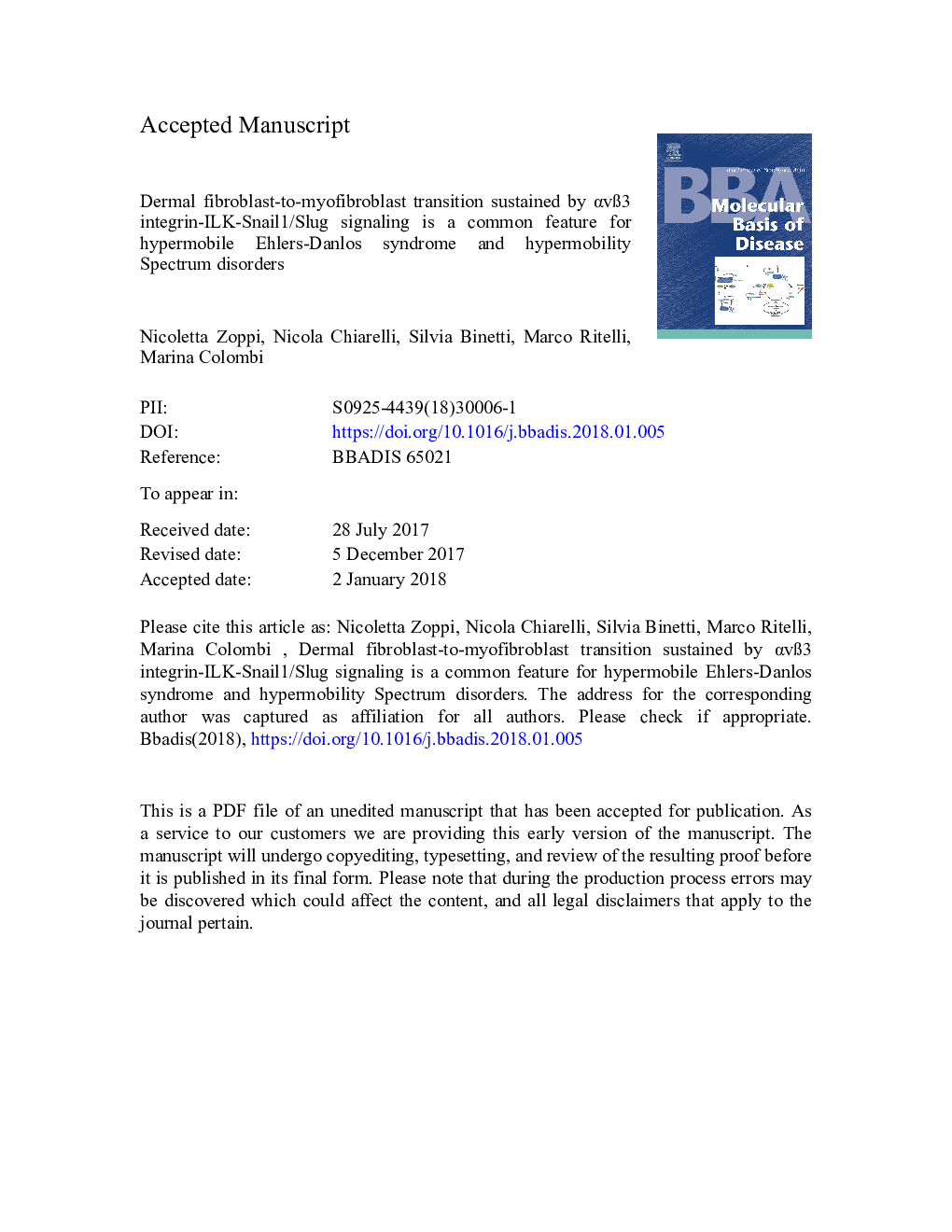| Article ID | Journal | Published Year | Pages | File Type |
|---|---|---|---|---|
| 8258565 | Biochimica et Biophysica Acta (BBA) - Molecular Basis of Disease | 2018 | 45 Pages |
Abstract
Hypermobile Ehlers-Danlos syndrome (hEDS) is a heritable connective tissue disorder with unknown molecular basis mainly characterized by generalized joint hypermobility, joint instability complications, and minor skin changes. The phenotypic spectrum is broad and includes multiple associated symptoms shared with chronic inflammatory systemic diseases. The stricter criteria defined in the 2017 EDS nosology leave without an identity many individuals with symptomatic joint hypermobility and/or features of hEDS; for these patients, the term Hypermobility Spectrum Disorders (HSD) was introduced. We previously reported that in vitro cultured hEDS and HSD patients' skin fibroblasts show a disarray of several extracellular matrix (ECM) components and dysregulated expression of genes involved in connective tissue homeostasis and inflammatory/pain/immune responses. Herein, we report that hEDS and HSD skin fibroblasts exhibit in vitro a similar myofibroblast-like phenotype characterized by the organization of α-smooth muscle actin cytoskeleton, expression of OB-cadherin/cadherin-11, enhanced migratory capability associated with augmented levels of the ECM-degrading metalloproteinase-9, and altered expression of the inflammation mediators CCN1/CYR61 and CCN2/CTGF. We demonstrate that in hEDS and HSD cells this fibroblast-to-myofibroblast transition is triggered by a signal transduction pathway that involves αvβ3 integrin-ILK complexes, organized in focal adhesions, and the Snail1/Slug transcription factor, thus providing insights into the molecular mechanisms related to the pathophysiology of these protean disorders. The indistinguishable phenotype identified in hEDS and HSD cells resembles an inflammatory-like condition, which correlates well with the systemic phenotype of patients, and suggests that these multisystemic disorders might be part of a phenotypic continuum rather than representing distinct clinical entities.
Keywords
DAMPsHSDPFAHRPJHSEDSCIDqPCRmAbR.T.o.n.MMPα-SMAECMαvβ3 integrinMonoclonal antibodyPolyclonal antibodyILKα-smooth muscle actinover nightGeneralized joint hypermobilitystandard error of meanRoom temperatureHEDsEhlers-Danlos syndromeJoint hypermobility syndromeConditioned mediumFibronectinExtracellular matrixmatrix metalloproteinaseMEMSEMImmunofluorescence microscopyType III collagenType V collagenquantitative real-time polymerase chain reactionWestern blottingparaformaldehydeHorseradish peroxidaseintegrin linked kinasecollagens
Related Topics
Life Sciences
Biochemistry, Genetics and Molecular Biology
Ageing
Authors
Nicoletta Zoppi, Nicola Chiarelli, Silvia Binetti, Marco Ritelli, Marina Colombi,
